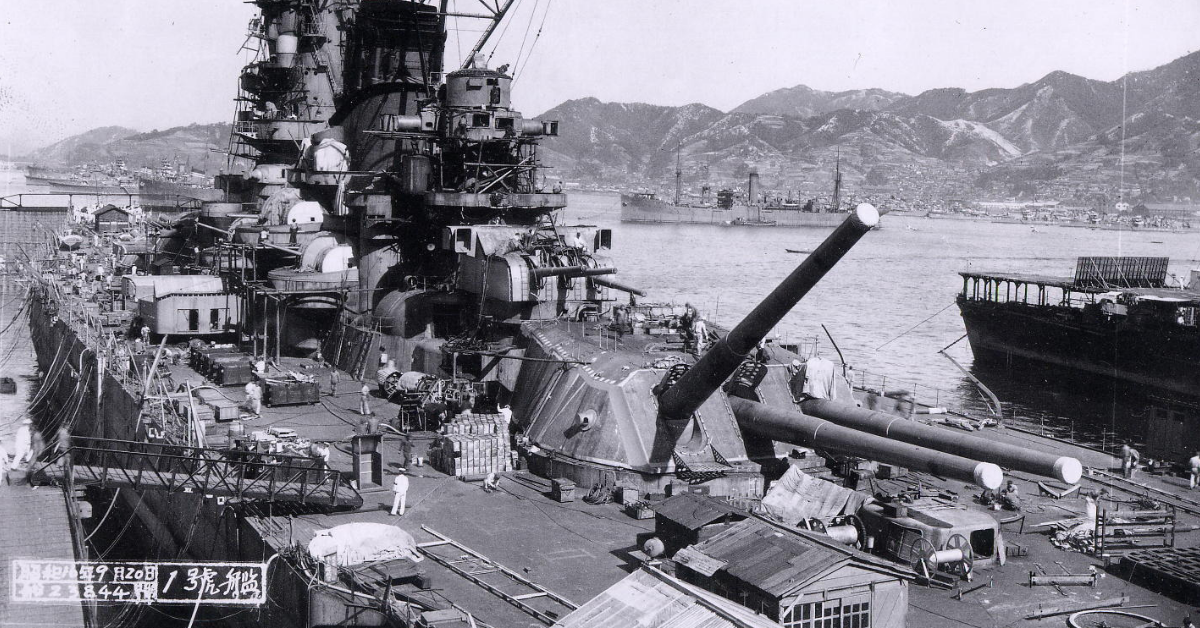IJN Yamato, a battleship of the Imperial Japanese Navy (IJN), was the first battleship of the Yamato class, the largest and most powerful battleship in naval history. It was named in honor of the Yamato Empire, the first historical name of Japan.
Yamato was designed to fight against several ships simultaneously. The IJN’s intention was to create a fleet of “impregnable and unsinkable castles” in the sea to counter the almost infinite production capacity of the United States Navy (USN), but these ships entered into combat when supremacy in naval battles no longer belonged to battleships. Their place had by then been usurped by aircraft carriers.
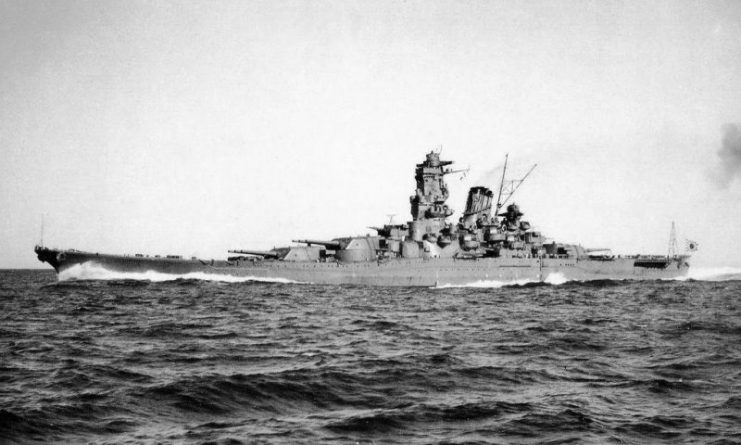
It was originally planned to build four battleships of the Yamato class, but only Yamato and its twin Musashi were completed and put into service. The third battleship, Shinano, was finished as an aircraft carrier to compensate for the Japanese losses at the Battle of Midway, and the fourth Yamato-class ship, Construction No. 111, was canceled at an early stage.
https://youtu.be/YkCnEaHZKSg
Construction and Early Service
The invasion of Manchuria by Japan in 1931 led to the breaking of the Washington Naval Treaty, signed in 1922, which had limited the size and power of warships. The IJN was now free to produce large warships, and finalized Yamato’s design in 1934.
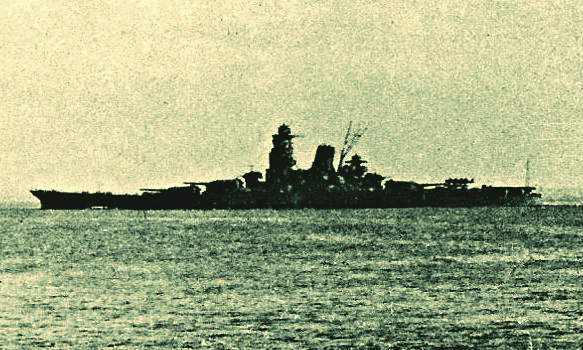
Yamato was constructed completely in secret, and the facilities where it was assembled were camouflaged. Yamato-class battleships stayed unknown to U.S. forces until the ships were used in combat against them. On August 8, 1940, Yamato was finally launched in Kure.
On February 12, 1942, Yamato became the flagship of the Combined Fleet of Admiral Isoroku Yamamoto, and served in that role until February 11, 1943, when Yamato was replaced by its twin, Musashi, as flagship of the Combined Fleet.
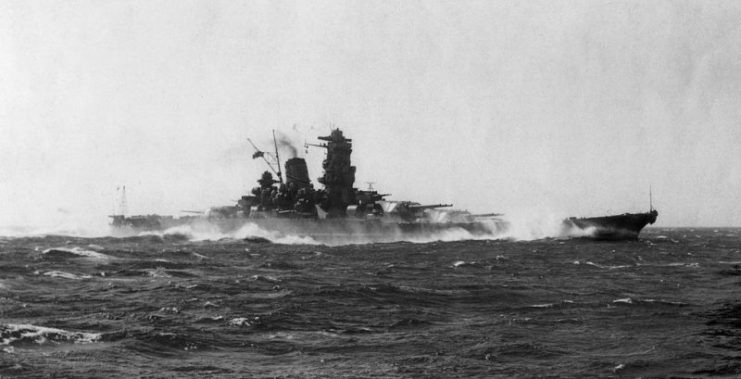
A Castle in the Sea
The battleship was equipped with nine 460mm guns, the highest amount of firepower ever available on a warship. For protection, it had nearly 16 inch thick steel armor on its sides, and nearly 8 inches of armor on the deck.
The final configuration of the secondary battery was six 155mm guns, twenty-four 127mm guns, and one hundred and sixty-two 25mm anti-aircraft guns. It also had two catapults with a crane for seven Mitsubishi F1M2 reconnaissance seaplanes.
Its length was 839 feet (256 meters) and it weighed 71,659 tons. It had 12 boilers and was powered by four steam turbines connected to four three-bladed propellers, and could attain a maximum speed of 28 knots. Yamato could carry 2,332 sailors.
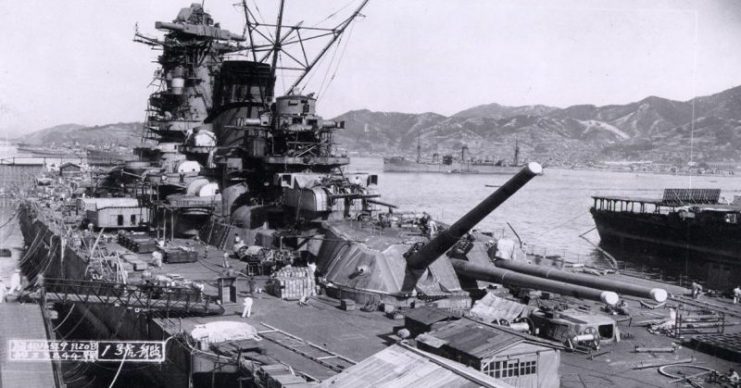
Not so Invulnerable
On August 28, 1942, close to the Japanese naval base located at Truk, Yamato was attacked by the American submarine USS Flying Fish (SS-229) with four torpedoes. Yamato managed to evade them all.
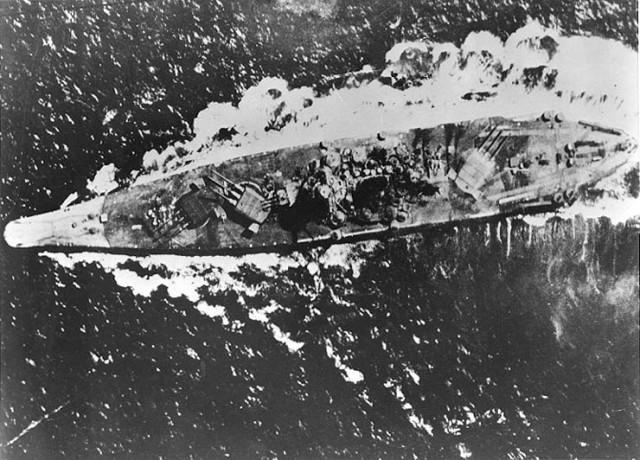
On December 25, 1943, the USS Skate (SS-305) launched four torpedoes at Yamato from a distance of just over 6,560 feet, causing an explosion near the stern and opening an 82-foot hole in its hull. 3,000 tons of water entered the ship, much more than expected. Yamato managed to reach the port at Truk and was repaired with assistance from the repair ship Akashi.
Little Participation in Battle
Yamato‘s war record was short. The ship reached an operational level on May 27, 1942, just in time to be part of the great fleet that departed two days later for the Battle of Midway. The battleships, sailing 300 nautical miles behind Admiral Nagumo’s aircraft carrier attack fleet, did not participate in the following combat. Admiral Yamamoto exercised general command from Yamato‘s bridge. The Battle of Midway was disastrous for Japan’s aircraft carrier forces, with 4 carriers sunk and 332 aircraft destroyed.
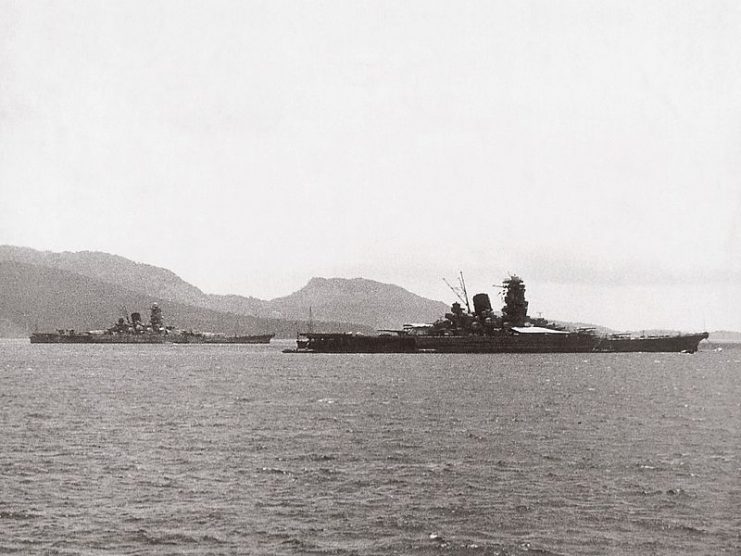
During the decisive combat in Guadalcanal from November 13-15, 1942, Yamato stayed inactive, anchored at Truk. From June 19-23, 1944, Yamato was part of the 2nd Fleet commanded by Vice Admiral Kurita, and was an escort for Vice Admiral Jisaburō Ozawa’s Mobile Fleet in the Battle of the Philippine Sea.
This battle was called the “Great Marianas Turkey Shoot” by American pilots, and the Japanese lost 3 aircraft carriers and 426 aircraft. The only significant contribution of Yamato was to cover the rear of the battered Imperial Japanese Navy. However, Yamato made the serious mistake of firing at Japanese aircraft that were returning to their bases, destroying and damaging some of them.
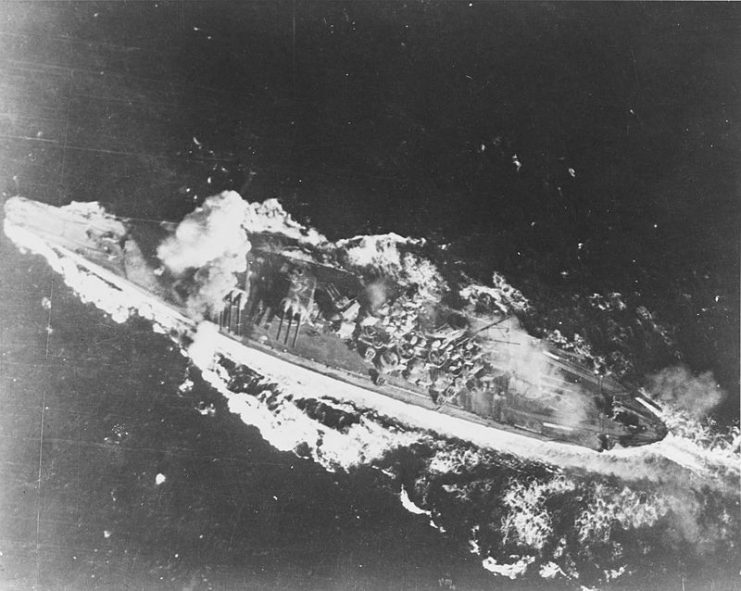
Overall, Yamato spent its short life mainly as an escort ship or transporting troops and supplies, and being repaired or working up its antiaircraft artillery at the naval base on Truk. Yamato‘s only participation in combat was in the Battle of Leyte Gulf.
Operation “SHO-GO” – The Battle of Leyte Gulf
The Japanese high command designed Operation “SHO-GO” (Victory) as a counterattack to the U.S. landing on the island of Leyte. The plan involved the sacrifice of an aircraft carrier decoy fleet, commanded by Ozawa, to attract the U.S. Third Fleet away from the San Bernardino Strait while the main Japanese fleet attacked at Leyte Gulf.
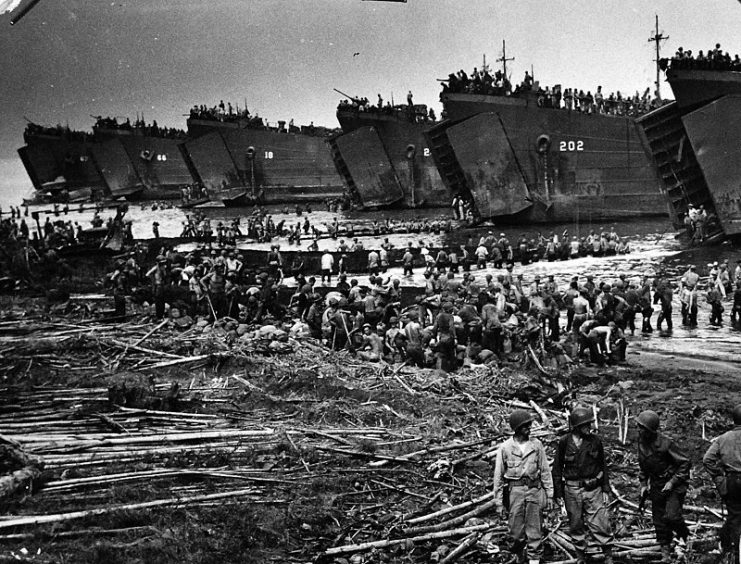
According to the plan, the Central Force of Vice Admiral Takeo Kurita would then penetrate Leyte and destroy the forces that had been landed by the enemy.
With this objective, five battleships, among which were Yamato and Musashi, and ten heavy cruisers departed Brunei in the direction of the Philippines on October 20, 1944.
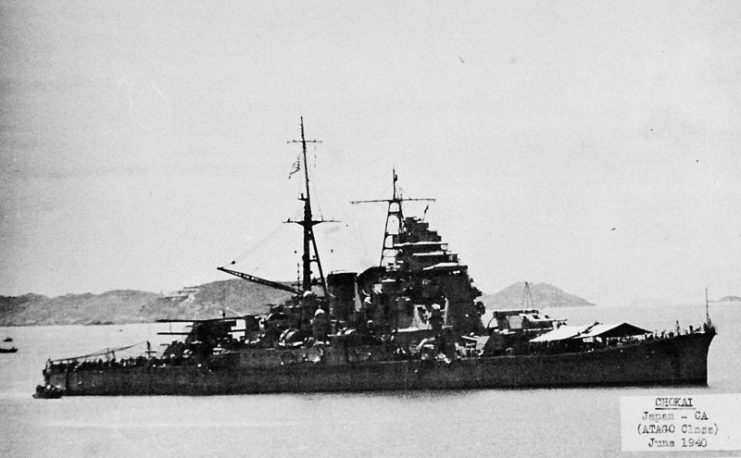
The Japanese fleet was divided into three squads that would attack from different directions. From Borneo would come Force A, commanded by Vice Admiral Takeo Kurita. From Nagasaki, Force B would attack under Vice Admiral Kiyohide Shimay. Finally, from Singapore, Force C would sail under Vice Admiral Shoji Nishimura.
The separate Ozawa fleet that was destined to be sunk by the enemy was composed of the last 4 aircraft carriers that were left to Japan, along with aircraft, 4 cruisers, 8 destroyers, and Yamato and Musashi.
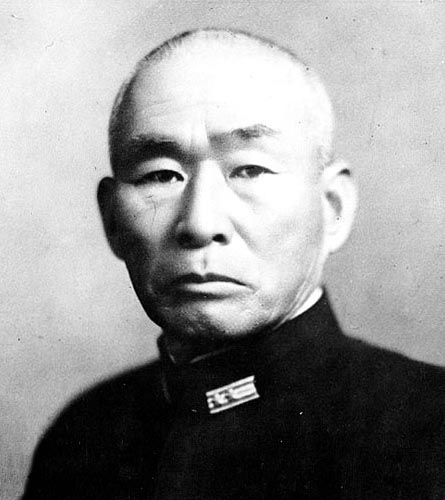
The Battle of Leyte Gulf: Battle of the Sibuyan Sea
The Battle of the Sibuyan Sea, October 23, 1944, was the beginning of the end for the Yamatos.
After 6 waves of bombing by aircraft from the American carrier USS Essex, Musashi was sunk without ever showing what she was capable of. Yamato was also the victim of this bombardment, being hit by two bombs, but suffered very slight damage thanks to its armor.
During the battle, Kurita’s flagship IJN Atago was sunk, so he transferred his command to Yamato.
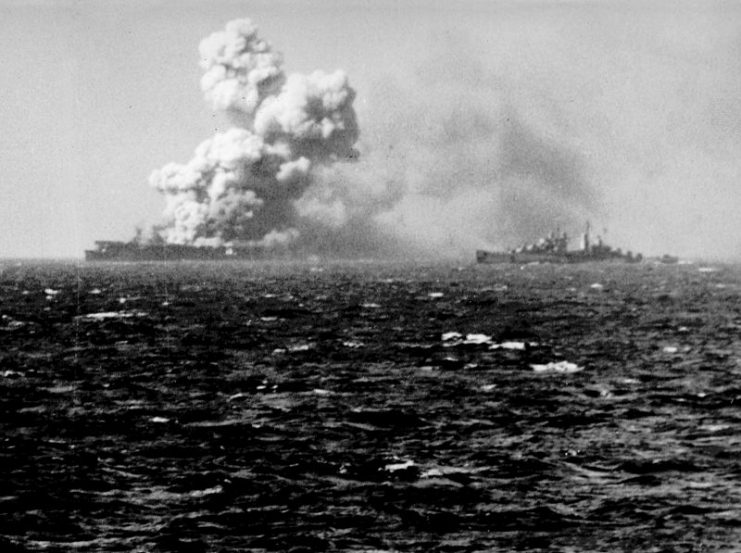
The Battle of Leyte Gulf: Battle off Samar
In this battle, Yamato used its main guns for the first and last time. Its victims were the escort carrier USS Gambier Bay (CVE-73) and the destroyer USS Hoel (DD-533), which were part of Task Unit 77.4.3, also called “Taffy 3,” of the Seventh Fleet of the United States Navy. “Taffy 3” had stayed near Leyte to provide close support to the invading troops, and was composed of 6 small escort carriers, some 400 aircraft, 3 destroyers, and 4 destroyer escorts. Additionally, Yamato opened fire on enemy aircraft.
The ships of 77.4.3, although armed with only 127-mm guns and torpedoes against the 460-mm guns of the Yamato, had the advantage of support from FM-2 Wildcats and TBM Avengers from their escort carriers. The aircraft attacked so fiercely that the Japanese fleet soon realized that it should retreat.
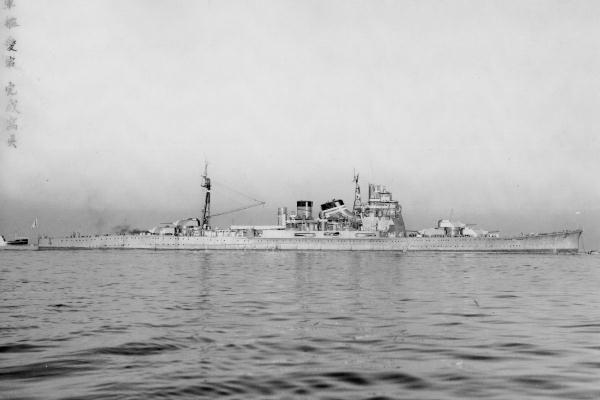
Yamato left the battle without serious damage. The Japanese lost three heavy cruisers and one light cruiser, but in return sank two U.S. escort carriers, two destroyers, and one escort destroyer.
Fight Until the End
To provide historical context for the next actions by the Japanese: After Germany’s defeat in World War I, its surface fleet was essentially impounded at Scapa Flow, Scotland, while the victors debated what to do with the ships. Eventually, the German sailors interned with the fleet sank their own ships rather than let them be seized and redistributed to other nations.
The Japanese did not want Yamato to have a similar fate or become a war trophy. They preferred a more heroic ending. Accordingly, Yamato would be sent on a final kamikaze mission to Okinawa without enough fuel to return. If Yamato managed to survive the battle, the crew would try to beach it on a nearby island and continue fighting until they had no more ammunition. Then the crew would disembark and join infantry forces on shore in the defense of the island. This plan was called Operation Ten-Go.
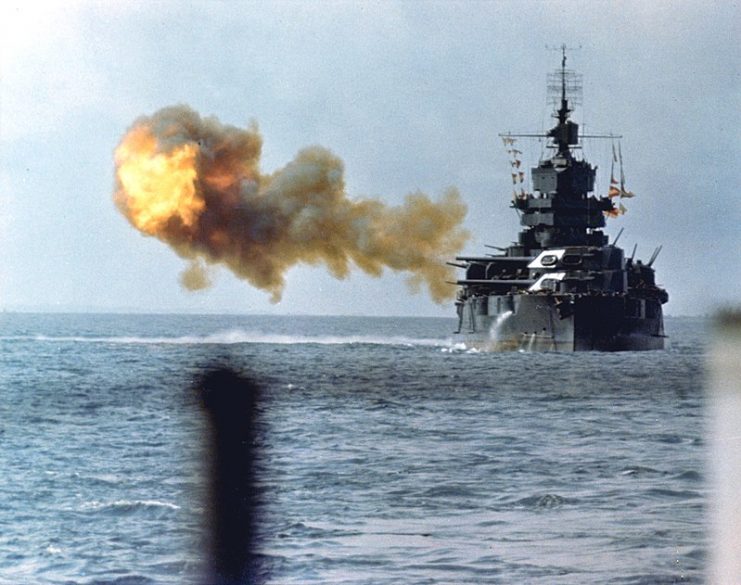
Operation Ten-Go was the last Japanese naval offensive of the Second World War. It was carried out by a fleet of ten ships: Yamato at the head, the cruiser Yahagi, and eight destroyers.
Yamato sailed from the port of Tokuyama at 3:20 p.m. on April 6, 1945 toward the Ryûkyû Islands where the Battle of Okinawa was taking place. At 8:23 a.m. on April 7, 1945, an American reconnaissance aircraft intercepted Yamato when she still had 124 miles to reach Okinawa.
The American fleet followed up with 386 Corsair, Hellcat, Avenger, Helldriver, and Wildcat aircraft, launched from US aircraft carriers.
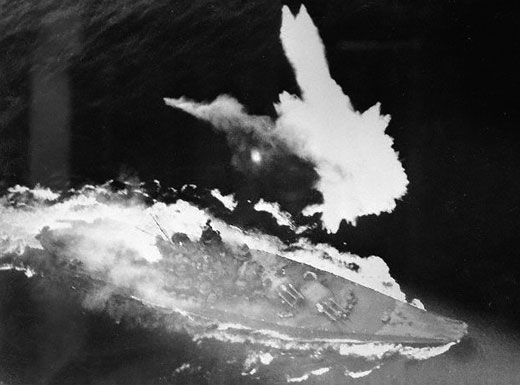
The battleship was attacked in three successive waves, receiving 8 bombs and 10 torpedoes in a battle lasting almost two hours. The concentration of torpedo impacts on the port side caused the ship to heel to the left, without counterflooding being able to correct it.
Once Yamato capsized, the magazines in its number 2 turret detonated, literally splitting the ship in two with the terrifying explosion, and leaving a mushroom-shaped column of smoke that rose over 3.5 miles. 2,475 members of the crew died, including the captain. 269 sailors were rescued by the destroyers Yukikaze, Hatsushimo, Fuyutsuki and Suzutsuki.
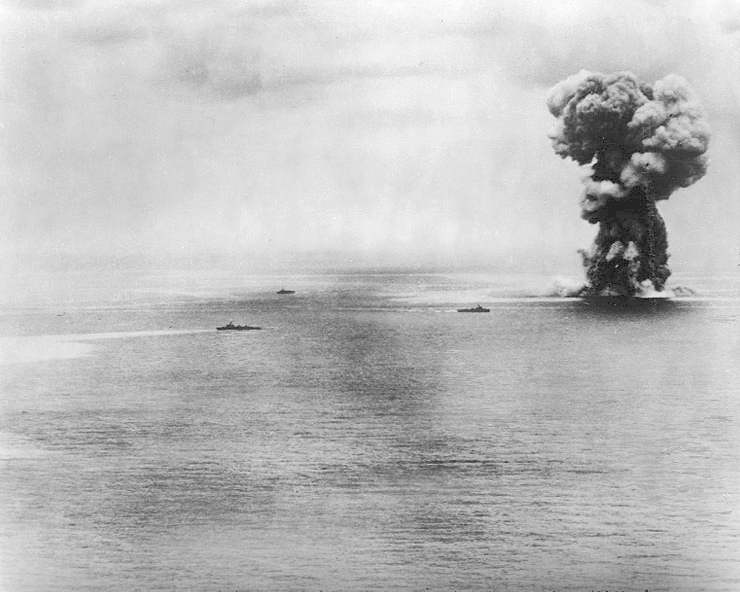
Yamato, Musashi, and Shinano, the 3 largest battleships of the Second World War, were sunk without being able to demonstrate their potential. Their firepower could not rival that of American naval air power.
